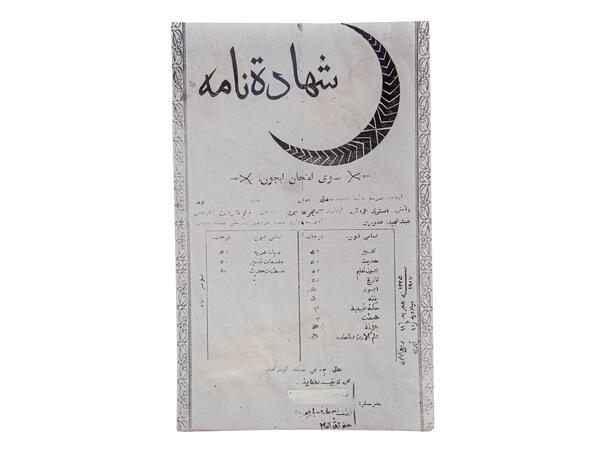Majit Gafuri graduated from the madrasa ‘Galiya’, a higher Muslim educational institution. The Galiya differed from traditional madrasas not only and not so much by the increased attention to sciences, as by the reflective study of the Islamic religion on the basis of primary sources.
The school began to form in 1906-1907. At that time, its basic principles of education were defined. For the next five years, the madrasa was developing as a center of secular education and was actively introducing innovative methods of teaching. In free time, students played music, visited theaters and studied foreign languages. And in 1913, ‘Galiya’ began to issue twice a month a scientific and literary magazine ‘Parlak’ edited by Shaikhzada Babich.
In 1913-1917, the madrasa became a unique educational institution by its program combining secular and religious approaches, which by its scale of that time exceeded all existing educational institutions of that type. In 1913, ‘Galiya’ madrasa had 94 pupils and 20 external students, and among its graduates, there were many prominent workers of culture and enlightenment. Many of them suffered a tragic fate during the Stalinist repressions: 70 percent of those who made up the national elite of Muslim peoples were shot or exiled to the camps, where they died of hunger and hard labor.
When Majit Gafuri learned about the opening of the madrasa ‘Galiya’ in Ufa in October 1906, he returned from Kazan back to Bashkortostan. During this period, he already debuted in the press with the poem ‘The Siberian railroad’ and the story in Tatar ‘The hungry year, or the sold girl’. He completed the six-year course of study as an external student in three years and received a diploma with the highest marks. The environment in the madrasa corresponded to the poet’s outlook and had a significant impact on his views. In parallel with his studies, Gafuri was engaged in collecting and studying Bashkir folklore, tried himself in different literary genres. Later on, Gafuri became friends with Ziya Kamali, the founder of the madrasa. He appreciated his mentor and visited him while he could walk.
The school began to form in 1906-1907. At that time, its basic principles of education were defined. For the next five years, the madrasa was developing as a center of secular education and was actively introducing innovative methods of teaching. In free time, students played music, visited theaters and studied foreign languages. And in 1913, ‘Galiya’ began to issue twice a month a scientific and literary magazine ‘Parlak’ edited by Shaikhzada Babich.
In 1913-1917, the madrasa became a unique educational institution by its program combining secular and religious approaches, which by its scale of that time exceeded all existing educational institutions of that type. In 1913, ‘Galiya’ madrasa had 94 pupils and 20 external students, and among its graduates, there were many prominent workers of culture and enlightenment. Many of them suffered a tragic fate during the Stalinist repressions: 70 percent of those who made up the national elite of Muslim peoples were shot or exiled to the camps, where they died of hunger and hard labor.
When Majit Gafuri learned about the opening of the madrasa ‘Galiya’ in Ufa in October 1906, he returned from Kazan back to Bashkortostan. During this period, he already debuted in the press with the poem ‘The Siberian railroad’ and the story in Tatar ‘The hungry year, or the sold girl’. He completed the six-year course of study as an external student in three years and received a diploma with the highest marks. The environment in the madrasa corresponded to the poet’s outlook and had a significant impact on his views. In parallel with his studies, Gafuri was engaged in collecting and studying Bashkir folklore, tried himself in different literary genres. Later on, Gafuri became friends with Ziya Kamali, the founder of the madrasa. He appreciated his mentor and visited him while he could walk.



